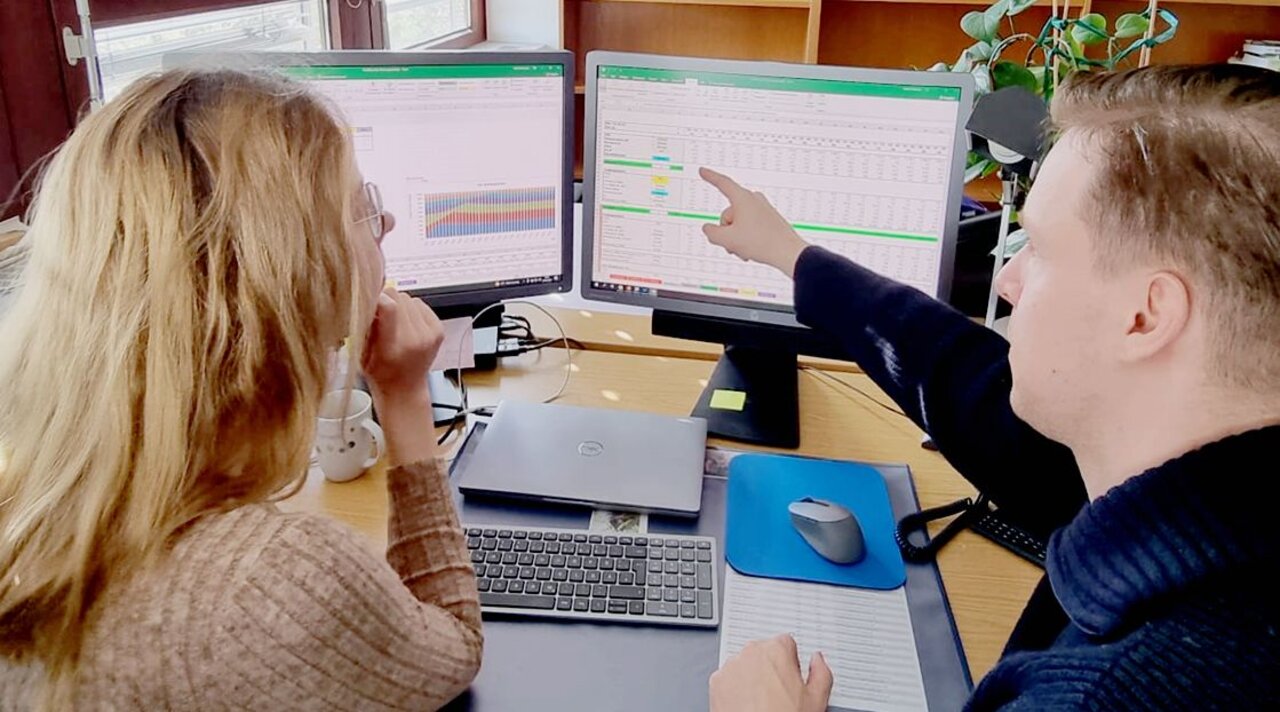Project
Climate protection services of forestry

Modeling the climate change mitigation services of forestry under changing climatic, ownership, economic, and institutional conditions
With changing climatic, ownership, economic, and institutional conditions, will the action choices of an economically rational forest owner be beneficial for climate change mitigation?
Background and Objective
The research hypothesis for the project is that, as a result of future changes in climatic, owner-specific, economic and institutional conditions, it can no longer be assumed that an economically rational forest owner will adhere to forest management with high climate protection performance. In the case of changing climatic framework conditions, changed risks in tree species selection and management concepts as a result of climate change must be considered in particular. Changed owner-specific framework conditions are derived from a progressive pluralization of German small private forest ownership. Likewise, more frequent market disturbances of the raw wood markets are to be expected as a consequence to the repercussions of biotic and abiotic climate related damage. Furthermore, there are indications that institutional framework conditions, such as public advisory and support services for small private forests or climate and energy policies, will change. It is reasonable to anticipate that forest owners will adjust their future forest management strategies in response to these evolving framework conditions.
In light of this context, the research project, structured in the sense of a systematic preliminary study, pursues the following objectives:
- Identification of possible changes in the climatic, owner-specific, economic and institutional framework conditions for economically rational forest management in the future.
- Modeling of an economic-rational adaptation of forest management to changed framework conditions
- Analysis of the climate protection performance of these forest management strategies
- Due to its character as a preliminary study, the research project is also intended to identify possible knowledge and research deficits that can be addressed in a subsequent larger-scale research project, if necessary.
Target Group
Politics, administrations, associations and practice
Approach
Due to the long life cycles of forest ecosystems and the long forestry production periods, the methodological focus of the project will be on the systematic analysis and further development of an existing forestry simulation model.
With the Forest Economic Simulation Model (FESIM) (formerly Strugholtz-Englert-Simulation Model), which was developed at the Department of Forest Economics of the Georg-August-University of Göttingen and applied and further developed by the Thünen-Institute for Forestry in several research projects, an appropriate model is available for this purpose. For the research project, this model would have to be further developed with regard to climate-sensitive modeling, such as by including climate-sensitive forest growth functions and survival probabilities, calamity-induced market disturbances, or an extended calculation of climate change impacts in the wood-based value chains.
Therefore, the following work steps are planned for the project:
- Systematic analysis of the Forest Economic Simulation Model (FESIM) and other forestry simulation models.
- Identification of factors influencing possible changes in climatic, owner-specific, economic and institutional conditions for economically rational forest management in the future.
- Derivation of economic-rational forest management strategies to adapt to changing framework conditions
- Development of scenarios for future forest management and modeling of these with the FESIM model
- Analysis of the natural and economic key figures for forest management of these scenarios and their climate protection performance
- Derivation of conclusions for politics, administrations, associations and practice
- Derivation of further research needs and initiation of follow-up research projects.
Data and Methods
Key input data for our simulations with the Forest Economic Simulation Model are data from the current Federal Forest Inventory (BWI 2012) as well as extensive literature research on future climatic, owner-specific, economic, and institutional conditions for future forest management in Germany.
Our Research Questions
Our research project has two overarching research questions:
- How do changing climatic, owner-specific, economic and institutional conditions affect future forest management?
- What effects will be changing forest management have on climate protection services and the economic situation of German forestry in the future?
Results
Alternative forest management strategies for forest adaptation to climate change
In view of changing survival probabilities of tree species as a result of climate change, the long-term effect of alternative treatment strategies for climate adaptation was analyzed. For this purpose, the following scenarios for the future management of the German forest were developed and simulated with FESIM:
- High Intensity Adaptation (HIA) scenario: In this scenario, active forest conversion takes place on the calamity and regular end-use areas with tree species adapted to climate change.
- Low Intensity Adaptation (LIA) - Scenario: In this scenario, passive forest management or partial withdrawal from active forest management is pursued. Here, a passive approach is taken with natural succession on all calamity plots and active tree species replacement only on regular end-use plots.
The following can be highlighted as key findings of the analysis of the simulation results:
- Active adaptation of forests to climate change requires significant financial sacrifices by the current generation for the benefit of future generations in the order of 400-600 million euros annually.
- Despite significant investment costs, active climate adaptation proves to be more economically advantageous in the long run compared to a passive approach with natural succession. At the end of the 200-year simulation period, the standing timber stock and its carbon storage would be about 50% higher with active climate adaptation than with passive adaptation. In addition, the natural and economic returns from timber use would be significantly higher under active climate adaptation, especially at the end of the simulation period.
- The high uncertainties about future climate, growth, and yield conditions could discourage forest owners from making these investments in forest climate adaptation.
FESIM further development
Within the framework of the research project, the following central model developments were realized:
- An additional successional tree species, birch, was integrated into the model.
- The treatment and development of successional stands can be modeled separately on regular end-use plots and calamity plots.
- The foundations were laid to simulate climate-sensitive changes in survival probabilities.
Initiation of follow-up projects Based on the research project results, a follow-up project for the further development of the FESIM model as well as a follow-up project on the climate effectiveness of different reward options for climate protection in forest management could be realized.
Project brief:
Forest management strategies for climate change. Project Brief Thünen Inst 2023/44a
Rosenkranz et al: DOI:10.3220/PB1701156270000
Thünen-Contact

Involved external Thünen-Partners
- Georg-August-Universität Göttingen
(Göttingen, Deutschland)
Duration
6.2020 - 5.2023
More Information
Project status:
finished
Publications
- 0
Rosenkranz L, Arnim G von, Englert H, Husmann K, Regelmann C, Roering H-W, Rosenberger R, Seintsch B, Dieter M, Möhring B (2023) Alternative forest management strategies to adapt to climate change: an economic evaluation for Germany. Braunschweig: Johann Heinrich von Thünen-Institut, 38 p, Thünen Working Paper 219, DOI:10.3220/WP1691499012000
- 1
Rosenkranz L, Arnim G von, Englert H, Husmann K, Regelmann C, Roering H-W, Rosenberger R, Seintsch B, Dieter M, Möhring B (2023) Forest management strategies for climate change. Hamburg: Thünen Institute of Forestry, 1 p, Project Brief Thünen Inst 2023/44a, DOI:10.3220/PB1701156270000
- 2
Rosenkranz L, Arnim G von, Englert H, Husmann K, Regelmann C, Roering H-W, Rosenberger R, Seintsch B, Dieter M, Möhring B (2023) Waldbehandlungsstrategien zur Klimaanpassung. Hamburg: Thünen-Institut für Waldwirtschaft, 1 p, Project Brief Thünen Inst 2023/44, DOI:10.3220/PB1701076790000








